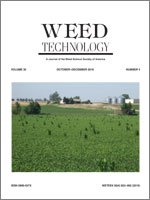Specialty crops, like flowers, herbs, and vegetables, generally do not have an adequate spectrum of herbicide chemistries to control weeds and have been dependent on hand weeding to achieve commercially acceptable weed control. However, labor shortages have led to higher costs for hand weeding. There is a need to develop labor-saving technologies for weed control in specialty crops if production costs are to be contained. Machine vision technology, together with data processors, have been developed to enable commercial machines to recognize crop row patterns and control automated devices that perform tasks such as removal of intrarow weeds, as well as to thin crops to desired stands. The commercial machine vision systems depend upon a size difference between the crops and weeds and/or the regular crop row pattern to enable the system to recognize crop plants and control surrounding weeds. However, where weeds are large or the weed population is very dense, then current machine vision systems cannot effectively differentiate weeds from crops. Commercially available automated weeders and thinners today depend upon cultivators or directed sprayers to control weeds. Weed control actuators on future models may use abrasion with sand blown in an air stream or heating with flaming devices to kill weeds. Future weed control strategies will likely require adaptation of the crops to automated weed removal equipment. One example would be changes in crop row patterns and spacing to facilitate cultivation in two directions. Chemical company consolidation continues to reduce the number of companies searching for new herbicides; increasing costs to develop new herbicides and price competition from existing products suggest that the downward trend in new herbicide development will continue. In contrast, automated weed removal equipment continues to improve and become more effective.
How to translate text using browser tools
1 October 2016
Technology for Automation of Weed Control in Specialty Crops
Steven A. Fennimore,
David C. Slaughter,
Mark C. Siemens,
Ramon G. Leon,
Mazin N. Saber
ACCESS THE FULL ARTICLE

Weed Technology
Vol. 30 • No. 4
October-December
Vol. 30 • No. 4
October-December
automation
integrated weed management
intelligent cultivator
intrarow weed control
mechanization
robotic weeding
vegetable crops





